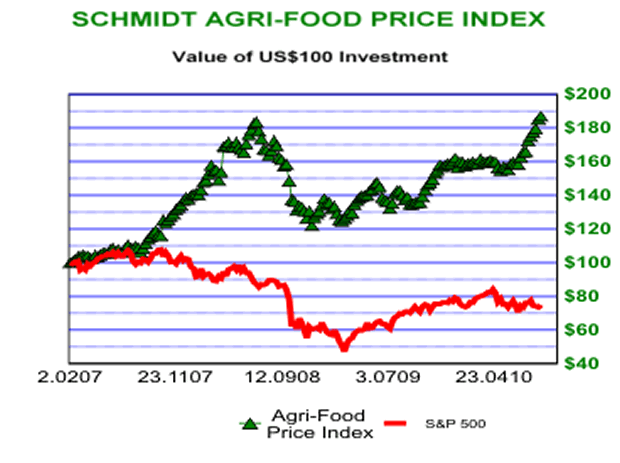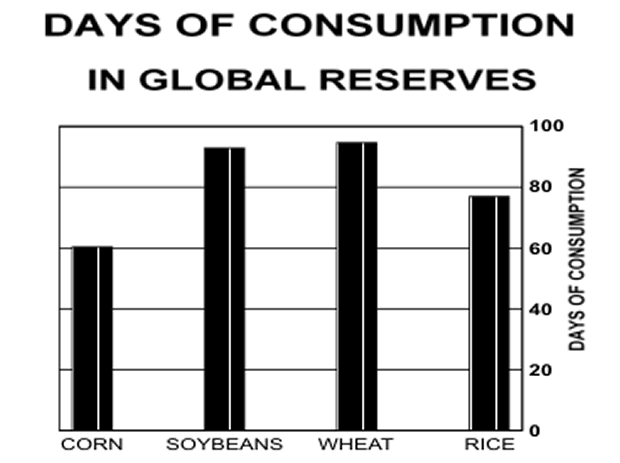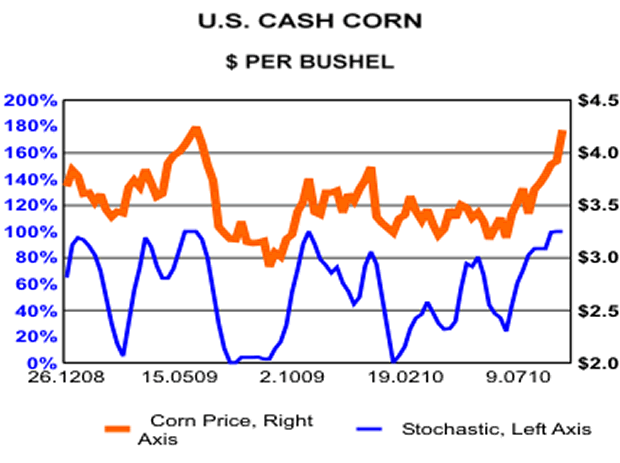
Posted on 09/05/2010 4:45:19 PM PDT by blam
Agri-Food Price Index Makes New High!
Commodities / Agricultural Commodities
Sep 04, 2010 - 05:16 AM
By: Ned W Schmidt
One road to wealth is to only own those assets for which the price is rising. That seems to be a rule that equity investors have forgotten. In any event, a great market technician once suggested only looking at those things with prices making new 52-week highs. His reasoning was that for the price of something to rise it must eventually make a new high. Well, based on the above chart, that technician would be all over Agri-Food commodities and associated investments. Our Agri-Food Price Index recently made a new high!

Recent embargo of grain exports by Russia due to problems with their wheat crops has served to highlight the tenuous nature of the world's Agri-Food situation. Cessation of Russian exports did not cause prices to rise. It just helped to uncap them. The fundamental Agri-Food shortage facing the world did not suddenly arise. It has been building for years.
List of countries that cannot feed their people is not a short one. Included in it are all the nations of the Middle East, Egypt, India, China, Philippines, etc. With prosperity beginning to arise in China and on its way in India, these two nations will increasingly turn to global markets to feed their citizens. They have no choice, as they lack the land and all-important water to feed their people. In the global game of Agri-Food, those nations that bid the highest will get the food.
If one reads the commentaries or listens to traders, the discussion still drones on about absolute size of grain reserves in the world. And yes, they are sizable. That view, however, focuses on a meaningless metric. Gasoline stocks today are many times the size that existed when this author was a teenage driver. We are not, however, paying 19 cents a gallon for gasoline. For what matters is not the size of the reserves, but those reserves relative to consumption.

In our first chart this week, above, is plotted the days of consumption held in global reserves for the Big Four, corn, soybeans, wheat, and rice. They all fall into a range of 60-95 days. If no production of these grains occurred, in less than 60 days no corn would be available. In the case of rice, in less than 80 days none would be found.
Numbers in that chart do not portray a picture of overwhelming bounty. Such is the reason that global grain markets responded to the Russian announcement. At the same time, the world has really not yet come to know the impact of the floods on Pakistani rice production. That country is the number three exporter of rice.
New 90-week high about to happen?

When Agri-Food is short in supply anywhere, the world turns to North America. Per the latest USDA report, U.S. wheat export sales are running 60+% ahead of a year ago. For rice, the same number rounds to being up 30%. Those sales are tightening the prices of all grains, such as corn in the above chart.
Corn has not yet risen to a new 90-week high, but it is well on its way to doing so. China, long a net importer of soybeans, is now moving to becoming a net importer of corn. That importation takes two forms, physical corn and dry distillers grain. Latter is a byproduct of ethanol production. Essence of the problem for China is that it lacks the water to grow sufficient corn. Importing corn is the importation of "virtual water."
When corn is $11 a bushel, who will benefit from it? Will your wealth? Two good ways exist to participate in the tightening of the global Agri-Food markets. One is through stocks of those companies that serve the global Agri-Food market. Second is through investment in Agri-Land. For those that might think in terms of the latter, our 4th Annual U.S. Agricultural Land As An Investment Portfolio Consideration - 2010 will soon be available at our web site. This report is the definitive annual study of the returns earned on U.S. agricultural land.
I do remember when gasoline was $0.19 a gallon.
I've read that the average American spends about 9% of their income on food while the Chinese spend about 29% of their income on food.
California is the #1 rice exporting state, not Louisiana as I once thought.
“Brazil screwed it all up,” Chris Mayer, editor of Mayer’s Special Situations, laments by way of giving us an explanation. Last week, the Brazilian government let loose a sudden, “immediately binding” mandate that effectively outlawed all foreign ownership of domestic farmland…eerily similar to the Zimbabwean farmland coup."
“Worse,” Chris continues, “the legal rules are so unclear that all such acquisitions since 1988 could be null and void, with the land returned to nationals. I can tell you from talking to people down there in the last few days – including attorneys – that local businesspeople are not dismissing that possibility. 
As has been the case for the past five decades, overproduction is one of the chief worries of the American Farmer.
Let the rest of the world starve to death, we’ve shown them how to produce more food than they can possible consume, and they’ve rejected our ideas.
Let’em starve, we need our crops to eat, to burn to heat our homes, and to fuel our cars.
A friend went to Mozambique last year. His business is agriculture. He went to help. We haven’t heard from him since news of the riots.
No good deed goes unpunished.
I’m sorry about your friend.
His disappearance illustrates that the starvation around the world is mostly rooted in politics, not agriculture.
Disclaimer: Opinions posted on Free Republic are those of the individual posters and do not necessarily represent the opinion of Free Republic or its management. All materials posted herein are protected by copyright law and the exemption for fair use of copyrighted works.